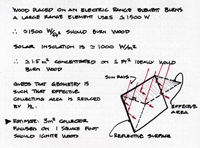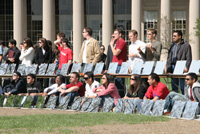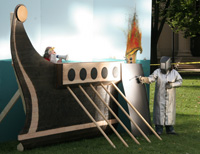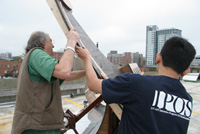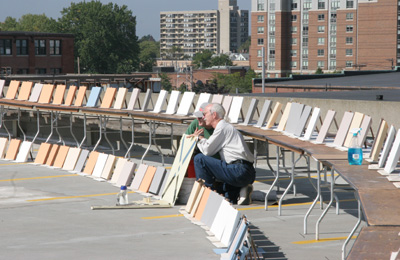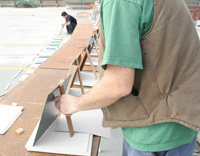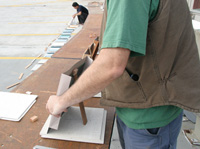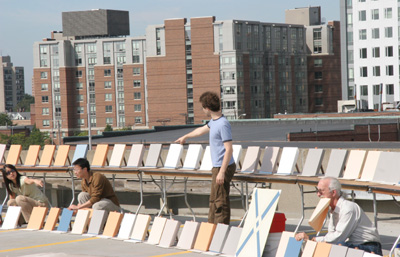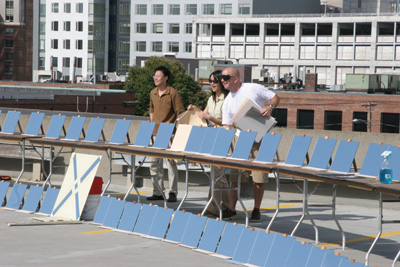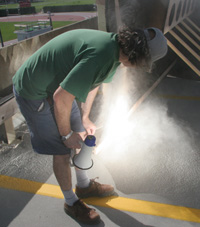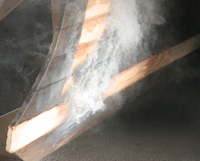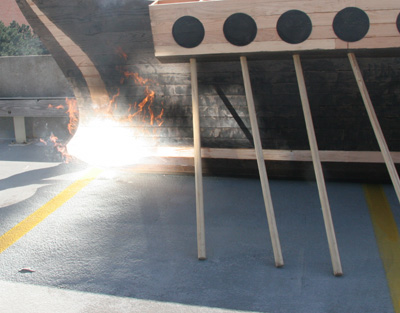Archimedes death ray
Archimedes Death Ray: Idea Feasibility Testing
See video of the experiment (.mov, 7.0 Mb version, 25.3 Mb version, or 69 Mb version) as seen on the TV program the Daily Planet. You may also want to read the FAQ or other publicity about the test. We also did a follow up experiment with the Mythbusters.
Click on image thumbnails to see larger images.
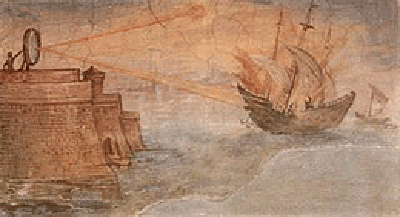 |
Ancient Greek and Roman historians recorded that during the siege of Syracuse in 212 BC, Archimedes (a notably smart person) constructed a burning glass to set the Roman warships, anchored within bow and arrow range, afire. The story has been much debated and a number of attempts to recreate it have been made over the ages. While some attempts have apparently been successful, the death ray is oft dismissed as myth. |
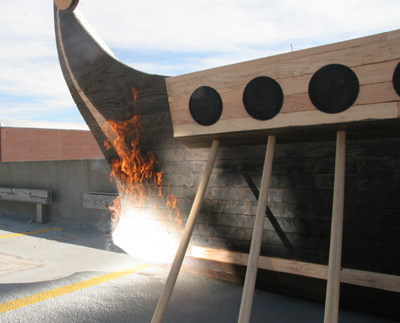 |
TV's MythBusters were not able to replicate the feat and “busted” the myth. Intrigued by the idea and an intuitive belief that it could work, MIT's 2.009ers decided to apply the early product development ‘sketch or soft modeling’ process to the problem. Our goal was not to make a decision on the myth—we just wanted to assess if it was at least possible to achieve in a simple manner, and to have some fun in the process. Jumping ahead, you can see the result… but let’s start at the beginning. (btw, the boat is made of 1" thick red oak) |
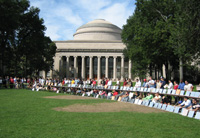 |
Aiming techniques were finalized after a few more quick experiments using 20 mirrors, and then the inventory of mirrored tiles (129, 1 foot square mirrors) was purchased at a hardware store. When a Roman ship conveniently sailed into Killian court at 1 PM on Friday, September 30, 2.009 was prepared for the ‘teamwork and coordination’ challenge. |
|
|
| In addition to reducing the available power, each mirror made a very diffuse image on the ship, making aiming more difficult, as evidenced by the size of the bright spot. Who would have thought that Archimedes had a bullhorn (or would be
on the Roman ship)? Only wisps of smoke were observed.
|
|
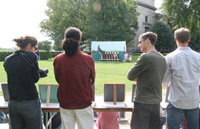 |
Verdict: Inconclusive Things learned: The idea is very sensitive to even light cloud cover; it was difficult to aim the mirrors; it is hard to get a large, unpracticed group to work together as an efficient team. |
What next? The ship, slightly more than 10 feet long, appeared again Tuesday, October 4 on the roof of West Garage (a convenient, but less scenic, location... at this site the setup could be stored if the weather did not cooperate). A team of approximately 10 faculty, staff and graduate students showed up to defend. |
|
The Roman ships are believed to have been painted with colored wax. Ours was stained with ‘minwax’. While it was thought that these materials would help with energy absorption and possibly act as accelerants, in the end it seemed that the stain did not matter… ignition occurred evenly over an area involving both raw wood and stained wood. The stain volatiles had boiled off and the region was evenly charred well before open flame was achieved.
|
|
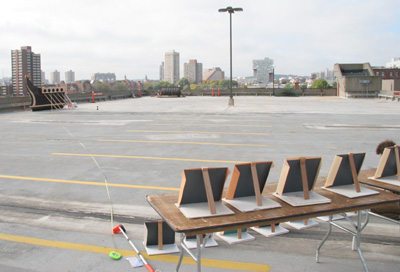 |
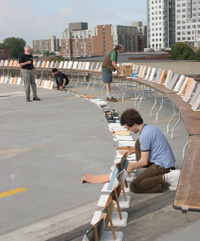 |
|
The mirrors were roughly positioned (but not aimed) using stands and then covered. This time there was 127 mirrors (in case you are counting, two mirrors from the first test were casualties). |
||
At 11:45 AM, a targeting mirror was positioned to project an ‘X” onto the ship, providing an unambiguous spot on which to aim. The aiming spot was slightly aft of the ship (to its right) since, at this distance and time of day, the ‘hot spot’ will move from right to left at a rate of approximately 36 feet per hour! |
|
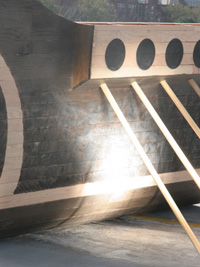 |
| Dang, that’s hot! |
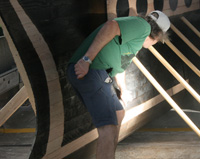 |
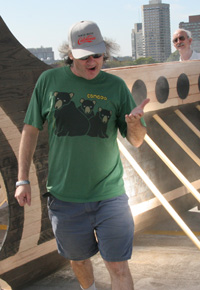 |
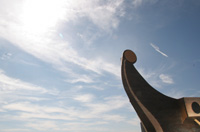 |
But look! There are pesky clouds again. At least this time the sun gods are a bit more kind. These are cirrus clouds and an open patch of sky is coming (to the right of the sun). |
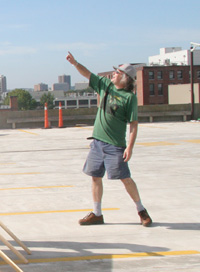 |
Times goes by… and the cloud still covers the sun. Smoke, but no charring and we are running out of boat. The mirrors are continuously adjusted to refine the focus. |
 |
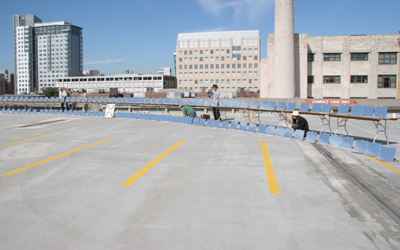 |
After ~20 minutes with the sun covered by cloud, we run out of boat and move the target. At least the real ships were on the order of 100 feet long! |
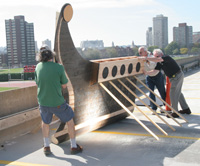 |
|
It’s really, really close! |
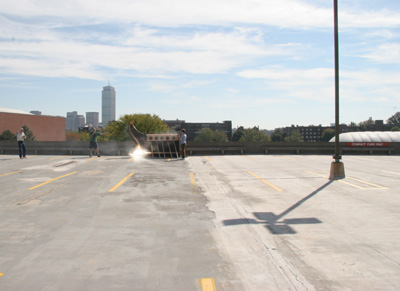 |
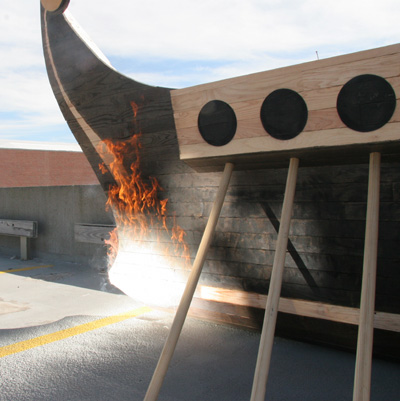 |
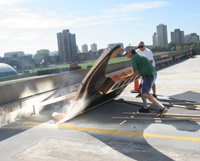 |
After letting it burn for a minute, it was time to smother it and then apply water! |
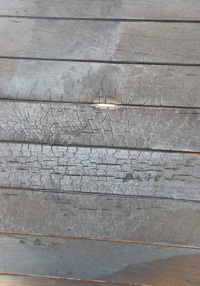 |
The short burn period created a hole through the planks. Our 2.009 conclusion? Feasibility estimate confirmed! Sketch models rock!! Questions? Try the FAQ. |







